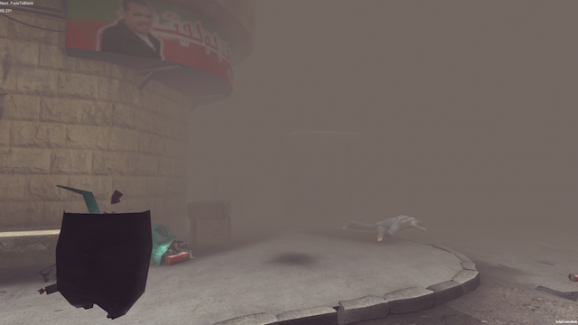Project Syria Allows A Glimpse Into Civil War Via Virtual Reality
This article is more than 2 years old
 Most people think of virtual reality as an immersive gaming experience, but it can be a lot more than that. Some war veterans are using VR systems to treat post-traumatic stress disorder, but what about situations in which the war is still ongoing? The University of South California Interactive Media Lab has developed something called Project Syria, which allows people to experience the horrors happening there via virtual reality.
Most people think of virtual reality as an immersive gaming experience, but it can be a lot more than that. Some war veterans are using VR systems to treat post-traumatic stress disorder, but what about situations in which the war is still ongoing? The University of South California Interactive Media Lab has developed something called Project Syria, which allows people to experience the horrors happening there via virtual reality.
Given that Syria has been ranked as the most dangerous country for journalists, and thus, journalists are less and less inclined to report from the trenches there, the developers wanted a way to spread information about the atrocities going on. They developed Project Syria as “immersive journalism,” which allows users to be transported into the middle of the ongoing civil war when they put on the goggles (the group designs its own). In the demo video below, the user experiences two scenarios all too common in Syria—a bomb explosion on a bustling Aleppo street, and then, about a minute in, a refugee camp overflowing with countless people who have been displaced by the war. The project debuted at the 2014 World Economic Forum in Davos and has since moved to London’s Victoria & Albert Museum.
While impressive, simply watching the demo as a video gives the impression of quick, animated scenarios, rather than the type of immersion actually wearing the headset provides. After I watched the demo I wondered how they made it—did the developers use their best guesses or imaginations to come up with these scenes, or did they somehow incorporate actual footage or data? For the sake of verisimilitude, the answers to these questions matter—a lot.
Turns out, the team did their homework. They did a bunch of research, including watching and analyzing video footage of explosions and their aftermaths. They harvested stills from the footage, which they made into panoramas and then into the streets in Aleppo in the first scenario. They even sent people to a refugee camp to get usable footage. They also recorded and use real audio capture on sight. This makes a huge difference in creating a realistic feel. Project Syria isn’t a video game, and what you see and experience doesn’t come from someone’s imagination. Now the question remains what to do about the situation in Syria—but at least the question has more urgency when it’s possible to experience, for however short a time and in an oblique way, what’s happening there.












